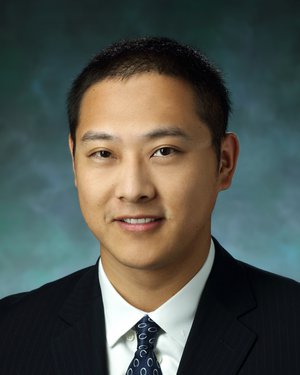Research Summary
I received my scientific training in the field of neurodegeneration and protein science. My laboratory has been at the forefront of exploring the role of prion-like proteins in the pathogenesis of neurodegeneration, including protein misfolding strains and structures, pathology spread, neurotoxicity, and neuroinflammation. We have pioneered the understanding of the cell-to-cell transmission of pathogenic α-syn, learning that lymphocyte-activation gene 3 (LAG3) is an essential receptor that mediates the internalization of α-syn preformed fibrils (PFF) (Science 2016). Deletion and inhibition of LAG3 significantly impede α-syn pathology spread. This work is selected as one of the 40 key discoveries in 200-years Parkinson’s disease basic research. We have identified amyloid-β precursor-like protein 1 (APLP1) as a LAG3 co-receptor that facilitates the neuronal uptake of α-syn PFF, and we have provided the mechanistic understanding on the spread of pathological proteins and provides structural information for the therapeutic targeting of pathological α-syn spread (PNAS 2021). Internalized PFF further induces the activation of poly (ADP-ribose) polymerase 1 (PARP1) and PAR accumulation, converting α-syn into a highly toxic strain (PAR-PFF). Both depletion and inhibition of PARP1 significantly inhibit PFF-induced neurodegeneration (Science 2018). We have studied the structures of misfolded protein/peptide and identified the amino acid sequence and core-β-sheet hairpin domains by biophysical method (JACS 2013; PNAS 2011). My laboratory employs advanced technologies, including a prion-like spread model, high-throughput screening platforms, protein misfolding cyclic amplification, nanobody, PROTAC, nanomaterials (Nano Today 2021), compound and protein microarray, to explore new molecular mechanisms and identify new agents to prevent aging-related pathogenesis.
Lab
Lab Website: Xiaobo Mao
Technology Expertise Keywords
Cell and Protein Biology, Biophysics
Selected Publications
Mao X, Ou MT, Karuppagounder SS, Kam TI, Yin X, Xiong Y, Ge P, Umanah GE, Brahmachari S, Shin JH, Kang HC, Zhang J, Xu J, Chen R, Park H, Andrabi SA, Kang SU, Goncalves RA, Liang Y, Zhang S, Qi C, Lam S, Keiler JA, Tyson J, Kim D, Panicker N, Yun SP, Workman CJ, Vignali DA, Dawson VL, Ko HS, Dawson TM. Pathological α-synuclein transmission initiated by binding lymphocyte-activation gene 3. Science. 2016 Sep 30;353(6307).
Kam TI#, Mao X#, Park H# (# equal contribution), Chou SC, Karuppagounder SS, Umanah GE, Yun SP, Brahmachari S, Panicker N, Chen R, Andrabi SA, Qi C, Poirier GG, Pletnikova O, Troncoso JC, Bekris LM, Leverenz JB, Pantelyat A, Ko HS, Rosenthal LS, Dawson TM and Dawson VL. Poly (ADP-ribose) Drives Pathologic α-Synuclein Neurodegeneration in Parkinson’s Disease. Science. 2018;362(6414). doi: 10.1126/science.aat8407.
Mao X, Guo Y, Luo Y, Niu L, Liu L, Ma X, Wang H, Yang Y, Wei G, Wang C. Sequence effects on peptide assembly characteristics observed by using scanning tunneling microscopy. J Am Chem Soc. 2013 Feb 13;135(6):2181-7.
Liu YQ, Mao YY (co-first), Xu EQ, Jia HM, Zhang S, Dawson VL, Dawson TM, Li YM*, Zheng Z*, He WW*, Mao X*. Nanozyme Scavenging ROS for Prevention of Pathologic α-Synuclein Transmission in Parkinson’s Disease. Nano Today. 2021, 36, 101027
Zhang SN, Liu YQ, Jia CY, Lim YJ (co-first), Feng GQ, Xu EQ, Kimura Y, Long HF, Tao YQ, Zhao CY, Wang CC, Liu ZY, Hu JJ, Ma MR, Liu ZJ, Jiang L, Li D, Wang RX, Dawson VL, Dawson TM*, Li YM*, Mao X*, Liu C*. Mechanistic basis for receptor-mediated pathological α-synuclein fibril cell-to-cell transmission in Parkinson's disease. Proc Natl Acad Sci. USA. 2021;118(26): e2011196118
Patents
A detection method for the relative adsorption constant of dye, antibody, drug and pro-drug molecules on peptides.
Patent # WO2011060598A1 & CN102062718 |
Therapeutic Uses of LAG3 the α-Synuclein Transmission Receptor.
Patent # WO2018039147A1, PCT/US2017/047878 |
Nanozyme Scavenging ROS for Prevention of Pathologic α-Synuclein Transmission in Parkinson’s Disease
Patent # C16214 |


Patient Ratings & Comments
The Patient Rating score is an average of all responses to physician related questions on the national CG-CAHPS Medical Practice patient experience survey through Press Ganey. Responses are measured on a scale of 1 to 5, with 5 being the best score. Comments are also gathered from our CG-CAHPS Medical Practice Survey through Press Ganey and displayed in their entirety. Patients are de-identified for confidentiality and patient privacy.